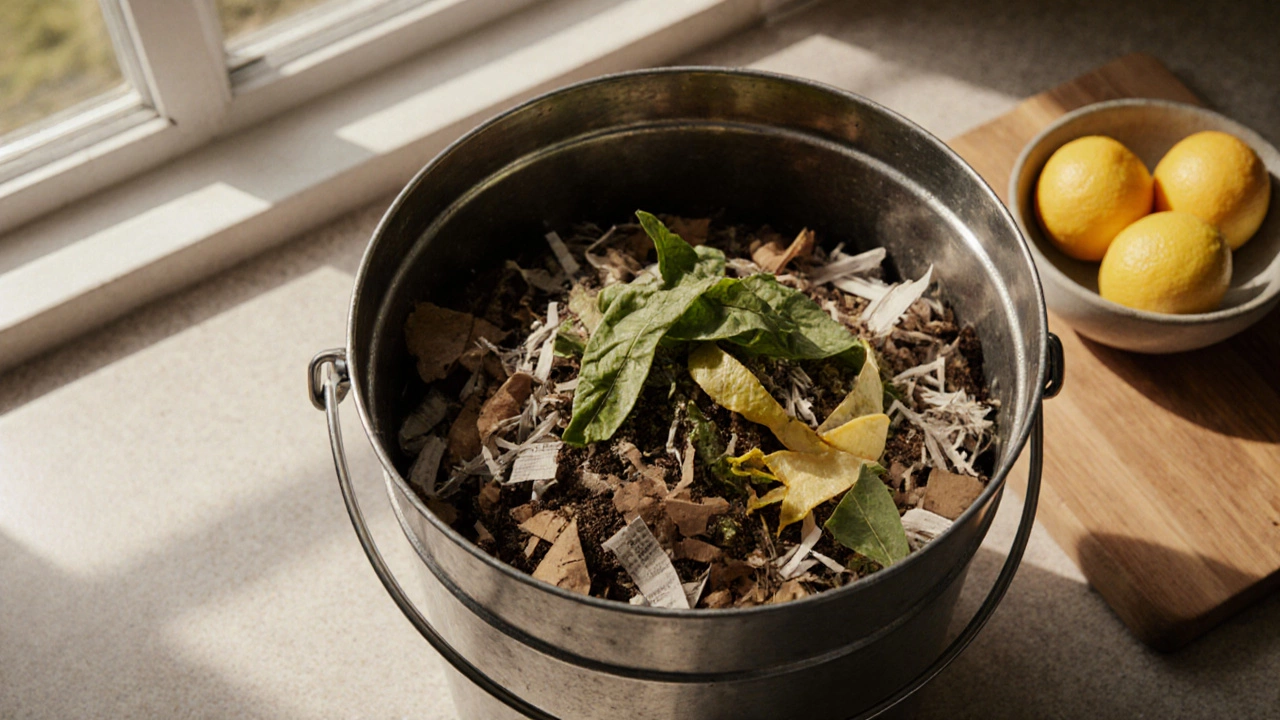Learn the four key ingredients-carbon-rich browns, nitrogen-rich greens, oxygen, and moisture-needed for fast, odor‑free composting and a nutrient‑rich garden amendment.
Brown and Green Material: What They Are and How to Use Them in Compost
When you start composting, you hear about brown and green material, the two basic categories of organic matter used to build healthy compost. Also known as carbon-rich and nitrogen-rich materials, they’re not about color—they’re about what’s inside. Brown material gives structure and energy, while green material feeds the microbes that turn waste into rich soil. Without the right mix, your pile either smells bad, stays dry, or just sits there doing nothing.
Think of brown material as the dry stuff: dried leaves, straw, cardboard, sawdust, or even shredded newspaper. These are high in carbon, which gives microbes the fuel they need to break things down. Green material is the wet stuff: grass clippings, vegetable scraps, coffee grounds, and tea bags. These are rich in nitrogen, which helps microbes multiply fast. The magic happens when you layer them right—about 3 parts brown to 1 part green. Too much green? It turns slimy and stinks. Too much brown? It won’t heat up and takes months to decompose.
This balance isn’t just theory—it’s what makes composting work in real gardens across India. If you’ve ever tried composting with only kitchen scraps and ended up with a soggy mess, you know why brown material matters. Farmers and home gardeners who get this right see faster decomposition, less odor, and soil that holds water and feeds plants naturally. You don’t need fancy bins or expensive tools. Just a pile, some patience, and the right mix of brown and green.
Some people think composting means collecting every scrap they can find. But it’s not about quantity—it’s about quality and balance. A handful of torn-up egg cartons can do more for your pile than a whole bag of banana peels. And if you’re short on leaves in winter, cardboard boxes from online orders work just as well. The goal isn’t perfection—it’s progress. Once you start seeing your scraps turn into dark, crumbly soil, you’ll understand why this simple split between brown and green material is the foundation of every successful compost pile.
Below, you’ll find real guides from gardeners who’ve cracked the code on using these materials—whether they’re composting on a balcony in Mumbai, fixing clay soil in Punjab, or keeping their drip systems clean with rich, well-made compost. No fluff. Just what works.
